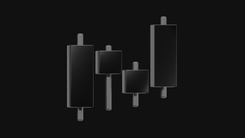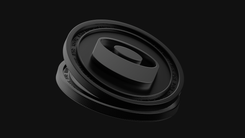Why You Should Check Smart Contracts Before Using DeFi Protocols

Decentralized Finance (DeFi) offers freedom: access to markets without intermediaries, passive income, and low fees. But along with these benefits come risks. One of the most underestimated but critical risks is vulnerabilities in smart contracts.
Many investors trust DeFi protocols with their assets without thinking about the code that powers these platforms. The result — hacks, losses, and frozen funds. To avoid such situations, it’s essential to understand why and how to review smart contracts before using them.
What Is a Smart Contract?
A smart contract is a program running on a blockchain that automatically executes actions when specific conditions are met.
For example:
- you deposit tokens into a liquidity pool
- the smart contract locks them and pays rewards
- you can withdraw your funds at any time
It seems simple and transparent. But the problem is: a smart contract is just code, and if there’s a bug or loophole, hackers can exploit it.
Key Risks of Smart Contracts
1. Code Bugs
Even experienced developers make mistakes. The most famous case is the 2016 The DAO hack, where a vulnerability led to $60 million being stolen.
Since then, there have been hundreds of incidents where a ‘simple code error’ cost users tens or even hundreds of millions.
2. Backdoors
Some contracts are intentionally coded to allow developers to alter the logic or steal funds. This isn’t a bug — it’s a feature for those planning to run off with the money.
3. Admin Privileges
If a contract allows one address to ‘upgrade’ the code or ‘pause’ functions, it can be used to freeze funds without notice.
4. Dependency on Other Contracts
Even if a contract itself is secure, it may rely on external contracts (e.g., for price feeds), and vulnerabilities could exist in those dependencies.
Real-Life Examples of Smart Contract Attacks
- Euler Finance (2023): $200 million stolen due to a lending logic bug.
- Cream Finance: multiple hacks totaling over $100 million due to poor oracle integrations.
- BadgerDAO: $120 million lost after a malicious script was injected into the UI, swapping recipient addresses during transaction approvals.
Takeaway: a protocol can be popular and seem safe, but one weak contract can drain all funds within seconds.
How to Do a Basic Smart Contract Check Yourself
While full technical audits require experts, basic checks are accessible to everyone.
1. Check for Audit Reports
Reliable projects publish audits from companies like Certik, Hacken, or Trail of Bits.
Key things to look for:
- Were critical bugs found?
- Were they fixed?
- Are limitations disclosed?
2. Review the Code on Blockchain Explorers
Most contracts are available on Etherscan, BscScan, etc.
Look for:
- Is the code open and verified?
- Spotting functions like ‘pause’, ‘admin’, or ‘upgrade’ usually means someone can stop the contract or tweak how it works.
3. Analyze Address Activity
Who interacts with the contract most often? Are large sums moving only from one wallet?
Check the ‘Holders’ or ‘Internal Txns’ section.
4. Research Feedback and Incidents
Browse forums (Reddit, Discord, X), ratings platforms (DefiLlama, TokenSniffer) — the contract may have a history of problems.
How EMCD Solves Trust and Security Issues
If you’re looking for DeFi tools with reliable infrastructure, check out EMCD CoinHold — a product from EMCD, the largest mining pool in the CIS. With CoinHold, you can:
- earn passive income on USDT without complicated setups
- use transparent and audited smart contracts
- avoid asset freezes and theft risks
- get monthly payouts
This product is designed for those who want to earn with crypto safely, without diving deep into DeFi complexities.




